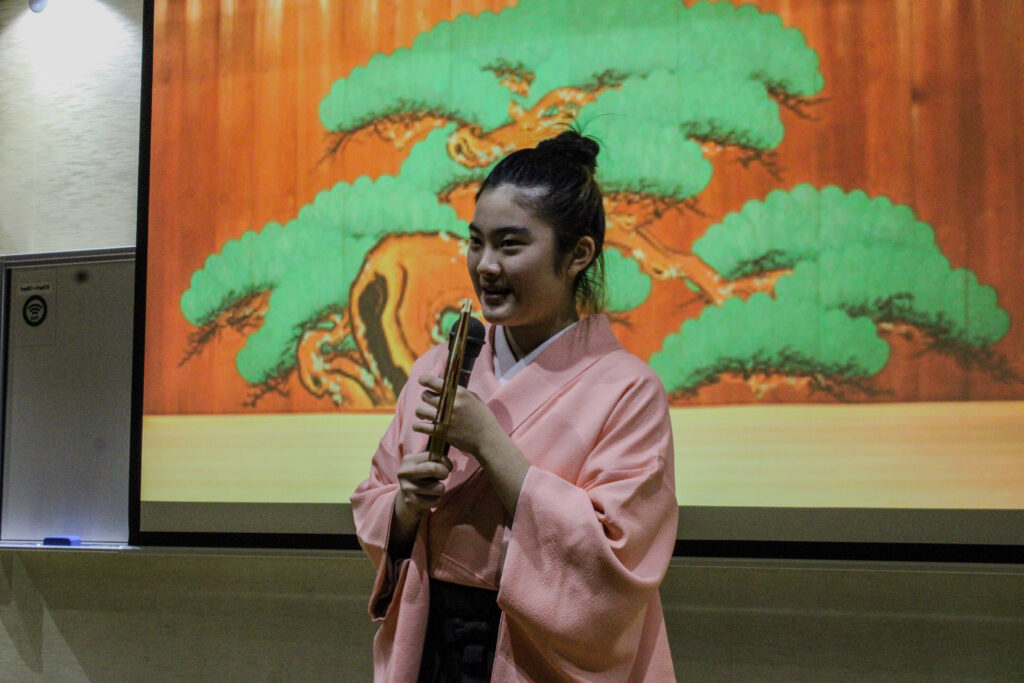Driving Question:
How does Japan’s culture perceive the concept of “existence”?
Project Summary:
Koko K., a Grade 10 student at TGs from Japan and Singapore, undertook a personal project titled “Between Nothing and Being.” This project explored Noh, a traditional Japanese theater form dating back to the 14th century. Through her research, Koko discovered that Noh theater requires an actor to possess inner solitude and concentration, allowing them to transcend their body and achieve a unique state of presence and groundedness.
Her project delved into the Japanese cultural concept of existence, using Noh and the pine tree (matsunoi), a symbol of eternity and longevity, as central themes. She examined how Shinto, which emphasizes the worship of nature and inanimate objects, and Buddhism, which focuses on change and impermanence, shape Japanese views on existence.
Koko engaged with multicultural literacy through this project, rediscovering and appreciating her Japanese culture. Her research included analyzing and reflecting on books about Shinto and Buddhism, attending Noh lessons with Kinue Ooshima Sensei, and studying Noh routines. She also compared Japanese concepts of existence with Western philosophical ideas from thinkers such as Victor Frankl, Sigmund Freud, Friedrich Nietzsche, and Aristotle.

Koko concluded that Japanese culture perceives existence as a balance between Shinto’s eternity and Buddhism’s impermanence. In Japan, the worship of kami (gods) in nature symbolizes eternity, while the frequent natural disasters and seasonal changes emphasize the impermanence of life. This cultural balance is reflected in the construction of buildings like shrines, which are designed to be periodically destroyed and rebuilt.
In her final summative product, Koko aimed to manifest this concept of existence by performing the Noh routine “Yuya,” striving to achieve neutrality in her physicality and mentality. She reflected on her learning process, acknowledging the need for better time management and a more chronological approach to her research.
Overall, the project deepened Koko’s understanding of Japanese customs, values, and beliefs, helping her to embrace her Japanese identity with confidence.